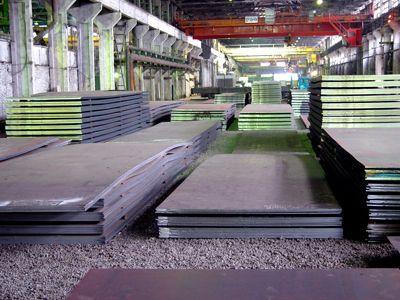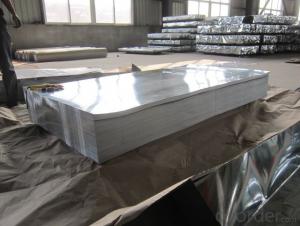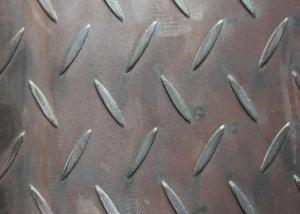Hot rolled sheet steel
- Loading Port:
- China Main Port
- Payment Terms:
- TT OR LC
- Min Order Qty:
- -
- Supply Capability:
- -
OKorder Service Pledge
OKorder Financial Service
You Might Also Like
In thick plate is 4.5 25.0 mm thickness steel plate,
In the thick plate
In the thick plate
Thickness is 25.0 100.0 mm thick plate, thickness more than 100.0 mm thick plate.
In thick plate is mainly used in construction, machinery manufacturing, container manufacturing, shipbuilding, bridge construction, etc. Also can be used to make all kinds of containers, furnace shell, furnace plates, bridge and vehicle static steel plate, low alloy steel plate, shipbuilding steel plate, boiler plate, pressure vessel steel plate, plate, automobile beam steel plate, some parts and welding tractor components, etc. Through the thick plate USES: widely used in the manufacture of containers, furnace shell, furnace plates, bridge and vehicle static steel, low alloy steel plate, steel Bridges with steel plate, made of steel plate, boiler plate, pressure vessel steel plate, plate, automobile beam steel plate, some parts and welding tractor component specific application.
bridge
Steel plate for large railway Bridges, requirements under dynamic load, shock, vibration, corrosion, etc., such as: Q
Pressure vessel plates
Pressure vessel plates
235 q, Q345q, etc.
shipbuilding
Used in the manufacture of Marine and inland ship hull, require high strength, plasticity, toughness and the cold bending property, welding performance, corrosion resistant performance is good. Such as: A32, D32, A36, D36, etc.
Boiler plate, boiler plate: used in the manufacture of all kinds of boiler and important attachment, because the boiler plate in medium temperature (below 350 ° C) work under the high pressure condition, except under high pressure and impact, fatigue load and water and gas corrosion, and the requirements to ensure certain strength, but also has good welding and the cold bending property, such as: Q245R, etc.
The pressure vessel
Mainly used in the manufacture of petroleum, chemical separation and gas storage and transportation of pressure vessels and other similar devices, general work pressure at atmospheric pressure to 320 kg/cm2 to 630 kg/cm2, even in - 20-450 ° C temperature within the scope of work, for the container plate except a certain strength and good plasticity and toughness, must also have good cold bending and welding performance, such as: Q245R, 15 crmor Q345R, 14 cr1mor, etc.
Car girder
Girders making cars (longitudinal beam, beam), the thickness of 2.5 12.0 mm low alloy hot rolled steel plate. Due to the complexity of automobile beam shape, besides demanding strength and cold bending performance, also requires stamping performance is good.
- Q: How do steel sheets handle expansion and contraction?
- Steel sheets handle expansion and contraction by allowing enough flexibility to accommodate changes in temperature. This is achieved through the inherent ductility and elasticity of steel, which enables it to expand and contract without significant deformation or damage. Additionally, steel sheets may be designed with specific expansion joints or gaps to further accommodate thermal changes and prevent buckling or warping.
- Q: Can the steel sheets be easily formed into decorative panels?
- Indeed, decorative panels can be effortlessly crafted from steel sheets. Steel, being a flexible material, can be molded and shaped into diverse forms, including decorative panels. By utilizing appropriate tools and methodologies, steel sheets can be skillfully cut, bent, and manipulated to produce intricate and distinctive designs. Furthermore, steel possesses exceptional durability and longevity, rendering it a perfect choice for decorative panels that necessitate both visual allure and structural soundness. Whether it is for architectural objectives, interior design endeavors, or artistic installations, steel sheets can be readily transformed into visually captivating and functionally efficient decorative panels.
- Q: What is the difference between a galvalume and galvanized steel sheet?
- The main difference between a galvalume and galvanized steel sheet lies in the coating applied to the steel surface. Galvalume steel sheets are coated with an aluminum-zinc alloy, while galvanized steel sheets are coated with zinc. The coating on galvalume steel sheets provides superior corrosion resistance compared to galvanized steel sheets. The combination of aluminum and zinc creates a protective barrier that helps prevent rusting and corrosion, even in harsh environments. Additionally, galvalume steel sheets have better heat reflectivity than galvanized steel sheets. This makes them more energy-efficient in hot climates as they reflect a larger portion of the sun's heat, reducing cooling costs. Furthermore, galvalume steel sheets have better resistance to scratches and fingerprints due to their unique coating composition. This makes them more visually appealing and easier to maintain compared to galvanized steel sheets. In terms of price, galvalume steel sheets are generally more expensive than galvanized steel sheets due to the added benefits and higher quality of the coating. However, the long-term cost-effectiveness of galvalume steel sheets can outweigh the initial higher purchase price. Overall, while both galvalume and galvanized steel sheets offer some level of protection against corrosion, galvalume steel sheets provide superior corrosion resistance, heat reflectivity, and aesthetic appeal. Therefore, the choice between the two depends on the specific requirements of the project and the environmental conditions the steel sheet will be exposed to.
- Q: Are steel sheets suitable for architectural projects?
- Yes, steel sheets are suitable for architectural projects. Steel sheets offer various benefits such as durability, strength, versatility, and design flexibility, making them an ideal choice for architectural applications. Steel sheets can be used for roofing, cladding, facades, and structural elements, providing a modern and sleek aesthetic. Additionally, steel sheets can be easily manipulated and formed into different shapes, allowing architects to create unique and innovative designs.
- Q: Are steel sheets suitable for solar panel mounting?
- Yes, steel sheets are suitable for solar panel mounting. They provide a strong and stable base for the panels, ensuring they are securely installed and can withstand various weather conditions. Additionally, steel sheets are durable and long-lasting, making them a reliable choice for solar panel mounting systems.
- Q: What is the thickness range of steel sheets?
- The thickness range of steel sheets can vary depending on the specific type and application, but it typically ranges from 0.4 millimeters to 6 millimeters.
- Q: What is the difference between Q235A steel and Q235B steel?
- Secondly, in the tensile and impact experiments, the material is Q235A steel, no impact test, the material is Q235B steel to do the normal temperature impact test, V notch. Relatively speaking, the mechanical properties of materials Q235B steel is much better than the material of Q235A steel.
- Q: How are steel sheets measured and classified?
- Steel sheets are typically measured and classified based on their thickness, which is commonly referred to as gauge. The gauge of steel sheets is determined by measuring the thickness of the sheet in terms of its weight per square foot or meter. The higher the gauge number, the thinner the sheet. Steel sheets are further classified based on their composition, finish, and intended application, such as hot-rolled, cold-rolled, galvanized, or stainless steel sheets.
- Q: How do steel sheets compare to stainless steel sheets in terms of corrosion resistance?
- Steel sheets and stainless steel sheets differ significantly in terms of corrosion resistance. While steel sheets are prone to corrosion due to their high carbon content, stainless steel sheets are specifically designed to resist corrosion. This is achieved by adding chromium to the alloy, which forms a protective oxide layer on the surface, preventing rust and corrosion. Therefore, stainless steel sheets offer superior corrosion resistance compared to regular steel sheets.
- Q: Should the carbon fiber reinforce the steel bar on the side of the beam?
- Chemical anchorage, chemical anchor bolt, carbon fiber reinforcement, steel reinforcement, fill crack traps, rust, concrete cutting drilling and repairing concrete foundation reinforcement etc..
Send your message to us
Hot rolled sheet steel
- Loading Port:
- China Main Port
- Payment Terms:
- TT OR LC
- Min Order Qty:
- -
- Supply Capability:
- -
OKorder Service Pledge
OKorder Financial Service
Similar products
Hot products
Hot Searches
Related keywords




























